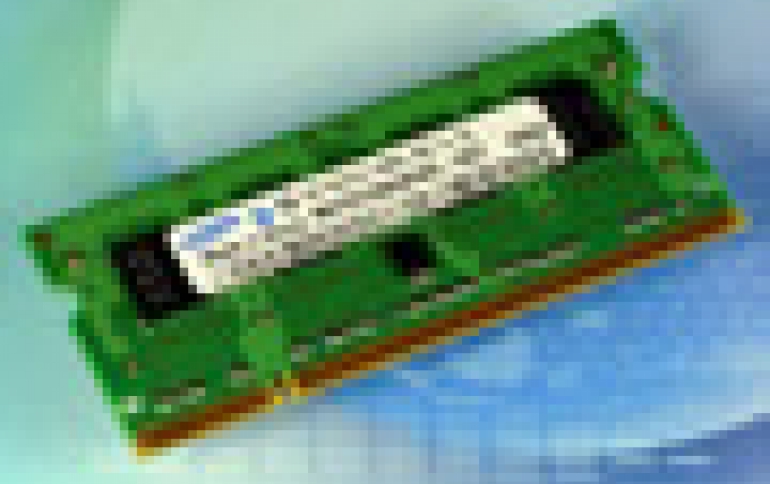
Samsung Announces Miniaturization Breakthrough With First 40nm Class DRAM
Samsung has developed and validated what it says is the first DDR 2 DRAM chips produced with 40-nanometer process technology.
This 1Gb DDR2 component (x8) and a corresponding 1GB 800Mbps DDR2 SODIMM (small outline DRAM inline memory module) -- both to be processed at 40nm -- have been certified in the Intel Platform Validation program for use with the Intel GM45 series Express mobile chipsets.
With the technology, Samsung's productivity could increase by about 60 percent compared to the 50-nanometer technology it is currently using. In addition, 40-nanometer DRAM could reduce electricity usage by over 30 percent, compared to the 50-nanometer DRAM.

Samsung also said the migration to 40nm class process technology is expected to accelerate the time-to-market cycle by 50% -- to just one year.
The company plans to apply its 40nm class technology to also develop a 2Gb DDR3 device for mass production by the end of 2009.
Samsung developed the industry's first 60-nanometer DRAM in 2005, and 50-nanometer DRAM in 2006. The world's top memory chip maker said that its foreign rivals, which still use 50-60 nanometer technology, "will likely remain about one or two years behind in terms of manufacturing competitiveness."
With the technology, Samsung's productivity could increase by about 60 percent compared to the 50-nanometer technology it is currently using. In addition, 40-nanometer DRAM could reduce electricity usage by over 30 percent, compared to the 50-nanometer DRAM.

Samsung also said the migration to 40nm class process technology is expected to accelerate the time-to-market cycle by 50% -- to just one year.
The company plans to apply its 40nm class technology to also develop a 2Gb DDR3 device for mass production by the end of 2009.
Samsung developed the industry's first 60-nanometer DRAM in 2005, and 50-nanometer DRAM in 2006. The world's top memory chip maker said that its foreign rivals, which still use 50-60 nanometer technology, "will likely remain about one or two years behind in terms of manufacturing competitiveness."





















